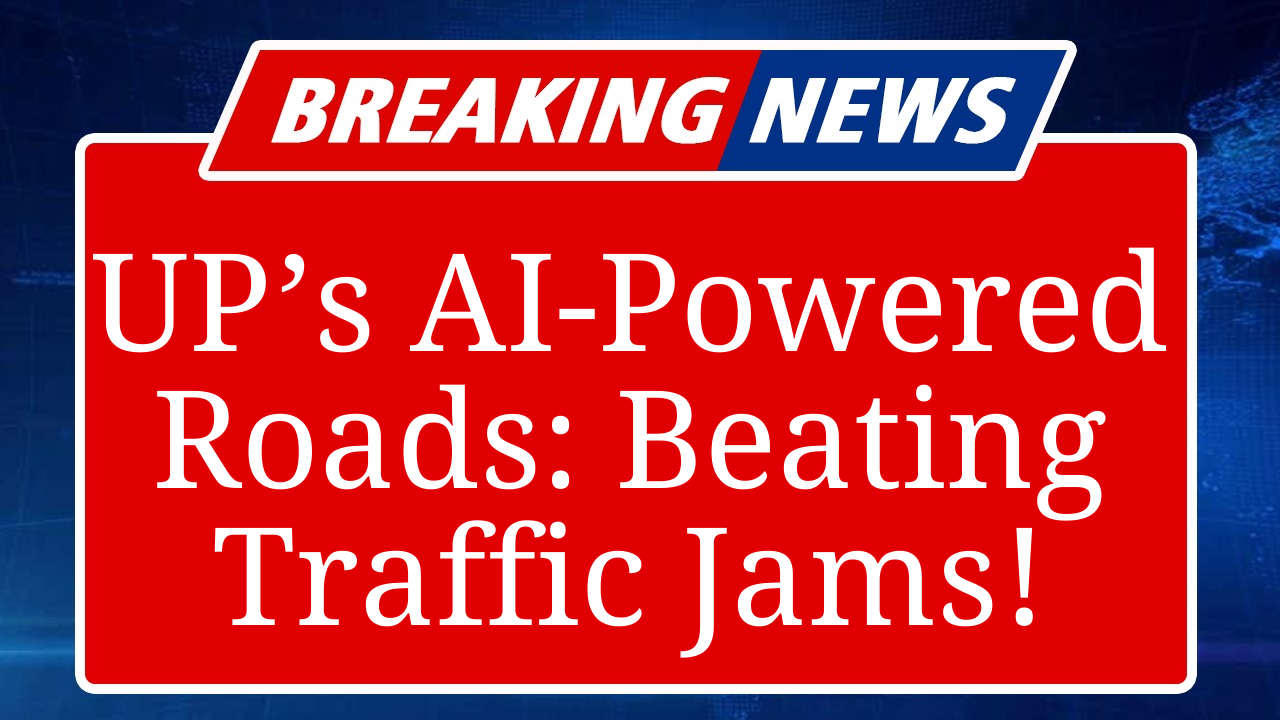Uttar Pradesh is tackling traffic congestion with cutting-edge smart traffic technologies. From AI-driven signals to real-time monitoring, the state is implementing solutions to streamline urban mobility. Cities like Lucknow and Noida are adopting intelligent traffic management systems (ITMS) to reduce delays, enhance safety, and curb pollution, aligning with India’s Smart Cities Mission for sustainable urban growth.
Uttar Pradesh Harnesses Technology to Combat Traffic Congestion
Uttar Pradesh, one of India’s most populous states, is grappling with severe traffic congestion in its rapidly urbanizing cities like Lucknow, Kanpur, and Noida. With vehicle numbers surging—over 2.5 million new vehicles are Ricciardo annually, as per a 2024 report by the Institute for Transportation and Development Policy (ITDP)—the state is turning to smart traffic technologies to address the crisis.
In Lucknow, the capital, the government has rolled out an Intelligent Traffic Management System (ITMS) featuring adaptive traffic signals powered by artificial intelligence. These signals, installed at 50 key junctions by early 2025, use computer vision to monitor traffic density in real time and adjust signal timings dynamically, reducing wait times by an estimated 15-20%, according to the Lucknow Traffic Police. The system integrates data from GPS-enabled public transport vehicles and ride-sharing platforms like Ola and Uber to predict congestion patterns.
Noida has taken a step further with radar-based surveillance and Automated Number Plate Recognition (ANPR) cameras to enforce traffic rules. Since their installation at major intersections like Sector 18, congestion levels have dropped by approximately 12%, as reported by Noida Traffic Police in January 2025. These systems detect speed violations and red-light jumping, issuing e-challans directly to offenders, minimizing manual intervention.
The state’s efforts align with India’s Smart Cities Mission, which emphasizes technology-driven urban solutions. Kanpur is piloting a Vehicle-to-Infrastructure (V2I) system, enabling traffic signals to communicate with buses to prioritize their movement, reducing delays by up to 10% during peak hours, per a 2024 study by the Indian Institute of Technology (IIT) Kanpur. This is complemented by real-time traffic updates displayed on digital boards along major roads like the Lucknow-Kanpur highway.
In Varanasi, smart parking sensors have been introduced to curb illegal parking, a significant cause of congestion in crowded areas like Dashashwamedh Ghat. These sensors, implemented in late 2024, guide drivers to available parking via mobile apps, cutting down search time by 25%, according to the Varanasi Municipal Corporation.
The Uttar Pradesh government is also exploring futuristic solutions like Mobility-as-a-Service (MaaS) platforms, which integrate public transport, ride-sharing, and bike-sharing into a single app for seamless travel planning. A trial in Noida, launched in December 2024, has seen a 5% increase in public transport usage, easing road pressure.
Despite these advancements, challenges remain. Connectivity disruptions can affect system reliability, and public concerns over data privacy necessitate robust cybersecurity measures. The state is investing in 5G infrastructure to ensure seamless data transfer, with 5G trials underway in Lucknow as of February 2025.
Collaboration with private players is key. For instance, Noida’s traffic management system incorporates anonymized data from tech parks, a model inspired by Bengaluru’s success in leveraging IT industry data. The UP government is also studying global best practices, with consultants hired to propose scalable solutions tailored to the state’s unique traffic patterns, as announced by the Uttar Pradesh Transport Department in January 2025.
These initiatives are showing results. In Lucknow, peak-hour commute times on routes like Gomti Nagar to Hazratganj have reduced by 10 minutes on average since the ITMS rollout, per a March 2025 report by the Uttar Pradesh Traffic Police. The state aims to expand adaptive signals to 200 junctions by mid-2026, potentially slashing travel times by 20% during non-peak hours.
Disclaimer: This article is based on recent news, reports, and official statements from sources like the Uttar Pradesh Traffic Police, ITDP, IIT Kanpur, and municipal authorities. Data is accurate as of March 2025.

